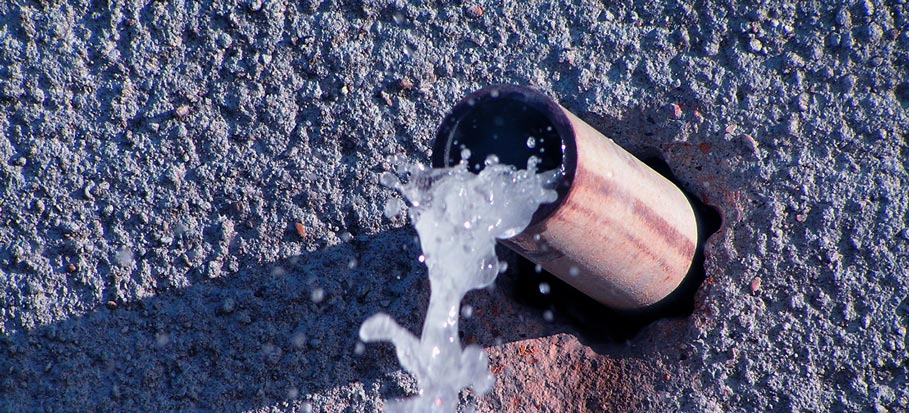Almost everyone is bound to have their personal thinking involving Locating water leaks.

Early detection of dripping water lines can mitigate a potential catastrophe. Some little water leakages may not be visible.
1. Examine the Water Meter
Every home has a water meter. Inspecting it is a proven manner in which helps you discover leaks. For starters, shut off all the water sources. Ensure no one will flush, use the faucet, shower, run the washing device or dishwashing machine. From there, most likely to the meter as well as watch if it will alter. Considering that no person is utilizing it, there need to be no activities. If it moves, that suggests a fast-moving leak. Furthermore, if you detect no changes, wait a hr or 2 and also examine back once more. This means you might have a slow-moving leak that might also be underground.
2. Check Water Consumption
Analyze your water costs as well as track your water usage. As the one paying it, you ought to observe if there are any kind of inconsistencies. If you detect sudden changes, regardless of your intake coinciding, it indicates that you have leaks in your plumbing system. Remember, your water bill should drop under the very same array on a monthly basis. An unexpected spike in your expense suggests a fast-moving leak.
A steady rise every month, even with the same behaviors, shows you have a slow leakage that's also gradually intensifying. Call a plumber to extensively examine your building, particularly if you really feel a warm location on your floor with piping beneath.
3. Do a Food Coloring Examination
When it comes to water intake, 30% comes from toilets. If the color in some way infiltrates your dish during that time without flushing, there's a leak in between the container and dish.
4. Asses Exterior Lines
Don't fail to remember to examine your outdoor water lines too. Test faucets by affixing a garden pipe. Should water seep out of the connection, you have a loose rubber gasket. Change this and also guarantee all links are limited. If you have actually obtained a lawn sprinkler, it will certainly help get it expertly checked out and preserved every year. One small leak can squander tons of water and also increase your water costs.
5. Examine the circumstance and also evaluate
Home owners should make it a practice to inspect under the sink counters as well as also inside cupboards for any type of bad odor or mold growth. These 2 warnings indicate a leak so punctual focus is called for. Doing regular examinations, also bi-annually, can save you from a significant problem.
Check for stainings and deteriorating as many appliances and also pipelines have a life span. If you believe leaking water lines in your plumbing system, do not wait for it to escalate.
Early discovery of dripping water lines can reduce a possible disaster. Some little water leaks may not be noticeable. Checking it is a proven way that assists you uncover leaks. One small leakage can waste bunches of water and surge your water bill.
If you think dripping water lines in your plumbing system, don't wait for it to intensify.
WARNING SIGNS OF WATER LEAKAGE BEHIND THE WALL
PERSISTENT MUSTY ODORS
As water slowly drips from a leaky pipe inside the wall, flooring and sheetrock stay damp and develop an odor similar to wet cardboard. It generates a musty smell that can help you find hidden leaks.
MOLD IN UNUSUAL AREAS
Mold usually grows in wet areas like kitchens, baths and laundry rooms. If you spot the stuff on walls or baseboards in other rooms of the house, it’s a good indicator of undetected water leaks.
STAINS THAT GROW
When mold thrives around a leaky pipe, it sometimes takes hold on the inside surface of the affected wall. A growing stain on otherwise clean sheetrock is often your sign of a hidden plumbing problem.
PEELING OR BUBBLING WALLPAPER / PAINT
This clue is easy to miss in rooms that don’t get much use. When you see wallpaper separating along seams or paint bubbling or flaking off the wall, blame sheetrock that stays wet because of an undetected leak.
BUCKLED CEILINGS AND STAINED FLOORS
If ceilings or floors in bathrooms, kitchens or laundry areas develop structural problems, don’t rule out constant damp inside the walls. Wet sheetrock can affect adjacent framing, flooring and ceilings.
https://www.servicemasterbyzaba.com/blog/how-to-detect-water-leakage-in-walls/

I discovered that content on Hacks to detect leaks when perusing the web. Those who liked our page kindly don't forget to share it. Thanks for your time spent reading it.
Act fast, Call us!